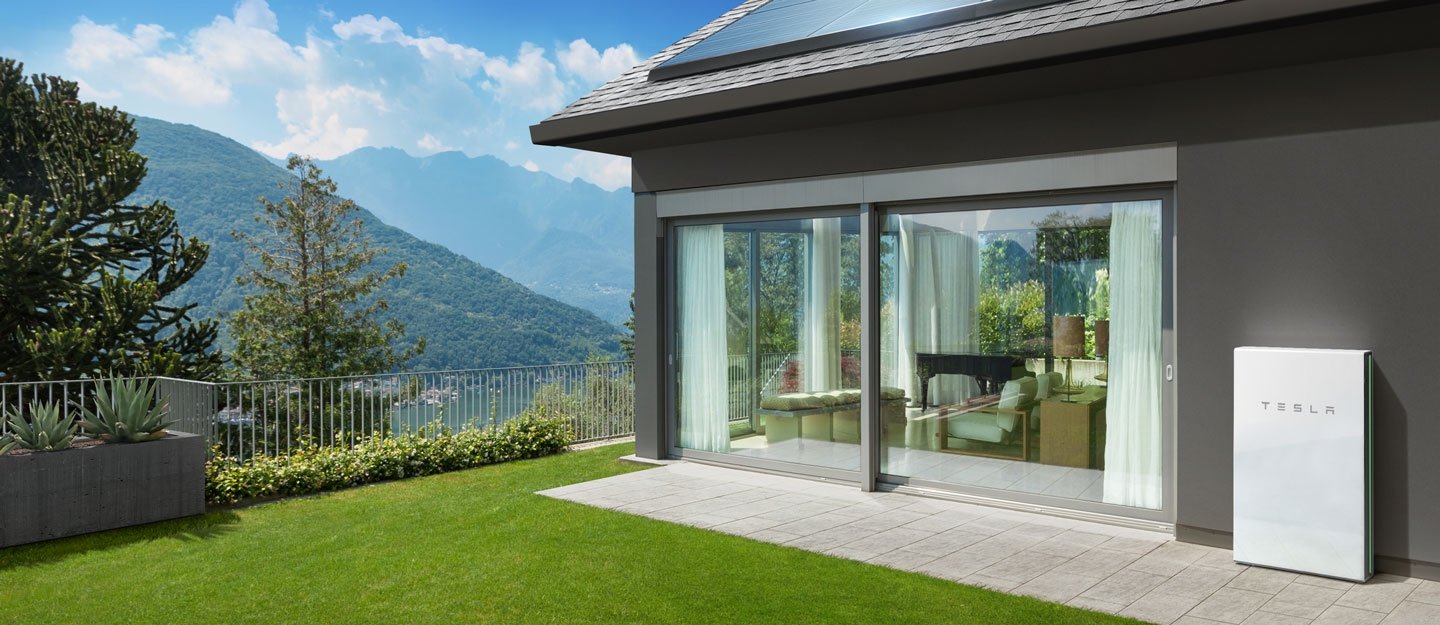

Energy
Tesla reduces Solar + Powerwall pricing amid CA wildfire power outages
With wildfires blazing through portions of California, Tesla CEO Elon Musk has knocked $1,000 off the price of Solar+Powerwall prices as of today in an effort to provide some assistance to homeowners affected by the power outages resulting from the ongoing fires.
Musk took to Twitter just hours after many residents of Los Angeles were required to evacuate their homes because of wildfires threatening the region. The Tesla CEO tweeted out numerous updates on the advantages of Tesla solar, like its ability to prevent power blackouts in the event of natural disasters. Musk also offered a $1,000 discount to customers in California who are directly affected by the ongoing wildfires.
If you’re directly affected by wildfire power outages, Tesla is reducing Solar+Powerwall prices by $1000 as of today
— Elon Musk (@elonmusk) October 28, 2019
The price reduction for its Solar+Powerwall package stands as another gesture from the electric car maker and its CEO. Musk has always maintained that Tesla’s purpose is not simply to make money. Rather, it is determined to accelerate the world’s adoption of sustainable solutions. Electric cars are one thing, but having homes switch to solar power with a battery-based backup is also a key pillar for this vision.
The value of a solar system and home battery unit is emphasized during times of power outages, such as those affecting parts of CA today. Due to the ongoing fires, particularly the Getty and Kincade Fires, portions of the state have been cut off from power. As noted by a recent CNN report, over a million residents across California currently face multiple days without power. It is these homeowners that stand as potential customers for Tesla’s Solar+Powerwall solutions.
Tesla started pushing its Energy business more this third quarter as the company hit its stride in its Model 3 production, and it showed in the company’s Q3 2019 results. Kunal Girotra, Tesla’s Senior Director, Energy Operations, described this rise in the third-quarter earnings call. “Our solar deployments rose by almost 50% over last quarter, and our energy storage deployments, which include Powerwalls and Powerpacks, grew by 15% to an all-time high of 477 megawatt hours,” he said.
We don’t make much money on this product, so $1000 actually means a lot
— Elon Musk (@elonmusk) October 28, 2019
These improvements came partly as a result of Tesla revamping his residential solar business, launching an affordable rental system that could cost homeowners as low as $50 a month. The company also took the wraps off its new solar solutions for businesses. These updates were accompanied by transparent pricing that gave customers clear expectations about their solar systems.
That being said, Elon Musk has admitted that Tesla does not really turn much of a profit on Solar+Powerwall installations or orders, adding that the $1,000 price reduction is significant. Musk has offered discounts in the past on Tesla’s solar products, including a nationwide price reduction after Pacific Gas and Electric (PG&E) announced mandatory power shutoffs in order to prevent wildfires in Northern California.
The fires in Los Angeles are very reminiscent of last year’s wildfires in the same region. The blazes in 2018 were the worst fires ever recorded in California’s history, destroying over 1.89 million acres of land, according to the California Department of Forestry and Fire Protection.

Energy
Tesla starts hiring efforts for Texas Megafactory
Tesla’s Brookshire site is expected to produce 10,000 Megapacks annually, equal to 40 gigawatt hours of energy storage.

Tesla has officially begun hiring for its new $200 million Megafactory in Brookshire, Texas, a manufacturing hub expected to employ 1,500 people by 2028. The facility, which will build Tesla’s grid-scale Megapack batteries, is part of the company’s growing energy storage footprint.
Tesla’s hiring efforts for the Texas Megafactory are hinted at by the job openings currently active on the company’s Careers website.
Tesla’s Texas Megafactory
Tesla’s Brookshire site is expected to produce 10,000 Megapacks annually, equal to 40 gigawatt hours of energy storage, similar to the Lathrop Megafactory in California. Tesla’s Careers website currently lists over 30 job openings for the site, from engineers, welders, and project managers. Each of the openings is listed for Brookshire, Texas.
The company has leased two buildings in Empire West Business Park, with over $194 million in combined property and equipment investment. Tesla’s agreement with Waller County includes a 60% property tax abatement, contingent on meeting employment benchmarks: 375 jobs by 2026, 750 by 2027, and 1,500 by 2028, as noted in a report from the Houston Business Journal. Tesla is required to employ at least 1,500 workers in the facility through the rest of the 10-year abatement period.
Tesla’s clean energy boom
City officials have stated that Tesla’s arrival marks a turning point for the Texas city, as it highlights a shift from logistics to advanced clean energy manufacturing. Ramiro Bautista from Brookshire’s economic development office, highlighted this in a comment to the Journal.
“(Tesla) has great-paying jobs. Not just that, but the advanced manufacturing (and) clean energy is coming to the area,” he said. “So it’s not just your normal logistics manufacturing. This is advanced manufacturing coming to this area, and this brings a different type of job and investment into the local economy.”
Energy
Tesla and Samsung SDI in talks over new US battery storage deal: report
The update was related by industry sources and initially reported by South Korean news outlets.

Recent reports have suggested that Tesla and Samsung SDI are in talks over a potential partnership to supply batteries for large-scale energy storage systems (ESS).
The update was related by industry sources and initially reported by South Korean news outlets.
ESS batteries to be built at Samsung’s Indiana plant
As noted in a report from Korea JoongAng Daily, the demand for energy storage systems has been growing rapidly in North America, thanks in no small part to the surge in AI investments across numerous companies. With this in mind, Tesla has reportedly approached Samsung SDI about a potential battery supply deal.
The deal is reportedly worth over 3 trillion Korean won (approximately $2.11 billion) and will span three years, according to The Korea Global Economic Daily. A battery supply deal with Samsung SDI could make sense for Tesla as the company already has a grid-scale battery, the Megapack, which is perfect for industrial use. Samsung SDI could simply supply cells for the EV maker.
Production of the batteries would reportedly take place at Samsung SDI’s joint venture factory with Stellantis in Indiana, which is currently under construction. Samsung SDI recently announced plans to use part of that plant’s EV lines to produce cells for ESS, with a targeted capacity of 30 GWh by the end of next year.
Tesla and Samsung’s partnership
At present, only a handful of manufacturers, including Korea’s LG Energy Solution, Samsung SDI, SK On, and Japan’s Panasonic, are capable of producing energy storage-scale batteries domestically in the United States. A Samsung SDI official issued a comment about the matter, stating, “Nothing has been finalized regarding cooperation with Tesla.”
The possible energy storage system deal adds another layer to Tesla’s growing collaboration with Samsung, which is already in line as a partner in the upcoming production of Tesla’s AI5 and AI6 chips. Early sample manufacturing of the AI6 is expected to begin in South Korea, with mass production slated for Samsung’s Texas-based Taylor foundry when it starts operations.
The AI6 chip will power Tesla’s next wave of high-volume projects, including the Optimus humanoid robot and the autonomous Cybercab service. Musk has called the partnership with Samsung a “real collaboration,” adding that he personally plans to “walk the line” at the Taylor facility to speed up progress.
Energy
Tesla VP hints at Solar Roof comeback with Giga New York push
The comments hint at possible renewed life for the Solar Roof program, which has seen years of slow growth since its 2016 unveiling.

Tesla’s long-awaited and way underrated Solar Roof may finally be getting its moment. During the company’s Q3 2025 earnings call, Vice President of Energy Engineering Michael Snyder revealed that production of a new residential solar panel has started at Tesla’s Buffalo, New York facility, with shipments to customers beginning in the first quarter of 2026.
The comments hint at possible renewed life for the Solar Roof program, which has seen years of slow growth since its 2016 unveiling.
Tesla Energy’s strong demand
Responding to an investor question about Tesla’s energy backlog, Snyder said demand for Megapack and Powerwall continues to be “really strong” into next year. He also noted positive customer feedback for the company’s new Megablock product, which is expected to start shipping from Houston in 2026.
“We’re seeing remarkable growth in the demand for AI and data center applications as hyperscalers and utilities have seen the versatility of the Megapack product. It increases reliability and relieves grid constraints,” he said.
Snyder also highlighted a “surge in residential solar demand in the US,” attributing the spike to recent policy changes that incentivize home installations. Tesla expects this trend to continue into 2026, helped by the rollout of a new solar lease product that makes adoption more affordable for homeowners.
Possible Solar Roof revival?
Perhaps the most intriguing part of Snyder’s remarks, however, was Tesla’s move to begin production of its “residential solar panel” in Buffalo, New York. He described the new panels as having “industry-leading aesthetics” and shape performance, language Tesla has used to market its Solar Roof tiles in the past.
“We also began production of our Tesla residential solar panel in our Buffalo factory, and we will be shipping that to customers starting Q1. The panel has industry-leading aesthetics and shape performance and demonstrates our continued commitment to US manufacturing,” Snyder said during the Q3 2025 earnings call.
Snyder did not explicitly name the product, though his reference to aesthetics has fueled speculation that Tesla may finally be preparing a large-scale and serious rollout of its Solar Roof line.
Originally unveiled in 2016, the Solar Roof was intended to transform rooftops into clean energy generators without compromising on design. However, despite early enthusiasm, production and installation volumes have remained limited for years. In 2023, a report from Wood Mackenzie claimed that there were only 3,000 operational Solar Roof installations across the United States at the time, far below forecasts. In response, the official Tesla Energy account on X stated that the report was “incorrect by a large margin.”








